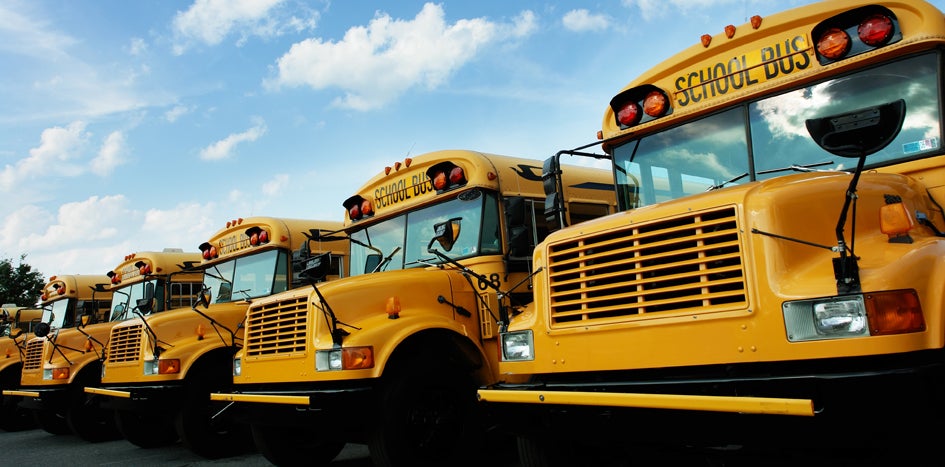Supervisors: You Can Help Prevent Groundskeeper Injuries
Groundskeepers are responsible for making sure school campuses, administrative offices, parking lots, and other property stays clean, safe, and looking good. It's a year-round job that gains steam in the spring. Supervisors are in the best position to help their employees stay safe and productive by following these tips.
Identify Hazards
Groundskeepers are assigned a variety of tasks. They mow, edge, plant, prune, and water school landscaping. They pick up trash, trimmings, and debris from parking lots and playgrounds. Physically demanding tasks include repairing concrete, digging trenches, removing trees, and loading debris into trailers.
The hazards of the job are as diverse as the duties. Examples include:
- Falls while using scissors lifts and ladders
- Heat and cold-related illnesses when working outdoors
- Back strains from lifting heavy items and hunching to work at ground level
- Chemical exposure while spraying pesticides
- Poisonous animals, insects, and plants
- Driving accidents while operating large trucks, tractors, riding mowers, and other machinery
- Hearing damage cause by loud equipment such as chain saws and blowers
- Eye injuries cause by flying debris
- Loose clothing that gets caught in moving machine parts
- Cuts and electrical shocks when working with power tools
Provide Personal Protective Equipment
Personal protective equipment (PPE) puts a barrier between employees and hazards. For example, a groundskeeper using a weed cutter would be wise to wear work gloves, steel-toe boots, hearing protection, safety glasses, and a full-face shield. Chain saws call for the same PPE plus protective chaps and jackets.
Check the manufacturer's instructions to see which PPE employees should use. Before they start work, make sure they understand that PPE is their last line of defense. Employees should never treat PPE as a substitute for working safely.
Train Employees
Employees can be your strongest defense against risk if supervisors deliver the training they need, before they start working.
Make it relevant. Teach employees them how to inspect, use, and care for the vehicles, equipment, and PPE they use on the job.
Keep it fresh. Train new hires and employees assigned to new tasks. Then, deliver refresher training consistently throughout the year.
Partner with vendors. When you buy equipment, ask if the vendor will include no-cost safety training in the contract. One Fund member invited their chain saw supplier to lead safety training for the grounds crew. Our team joined the session and taught tree-trimming safety basics.
Tell, show, do. Let's say you're training a crew to use ladders safely, lift heavy bags of mulch properly, drive a vehicle that's pulling a trailer, or use fall arrest systems when working at heights:
- Tell employees what you want them to know.
- Show them how to do the task safely.
- Give them hands-on experience.
Change the Way Work is Done
Groundskeepers sometimes work in isolated areas. If you assign them to do the job in teams, co-workers can help if someone suffers heat stroke, a poisonous snake bit, or another serious injury. Sending employees to isolated areas in teams is an administrative safety control.
Administrative controls reduce risk by changing the way employees work. Here are more examples:
- Schedule physically demanding work for cooler times of day.
- Pair new employees with experienced co-workers while they're learning.
- Avoid assigning employees to work near overhead power lines when possible.
- Make it clear that employees should never use tools for anything other than their intended purpose.
- Stick to a preventative maintenance plan for tools and equipment to make sure it's in good condition and safe to use.
Related Content
Whether they're trimming trees, pouring concrete, or operating heavy machinery, groundskeepers should know how to protect themselves. As your boots on the ground, supervisors are in the best position to give groundskeepers the tools they need. Use these resources to teach your team and make safety a value in your schools.
Fund blog posts
Training Toolkits*
- Personal Protective Equipment: Your Last Line of Defense
- Slips, Trips, and Falls: Keep Your Feet on Solid Ground
- Safe Driving Basics
- 8 Steps to a Safe Lift
*Available to Fund members with Workers' Compensation coverage
Texas Department of Insurance Resources
- Landscaping and Groundskeeping Safety
- Lawn Equipment Safety Training Aid in English and Spanish
- Electrical Safety Training Program in English and Spanish

David Wylie
David Wylie serves as content developer on the risk solutions team. He brings more than 20 years' experience writing educational content that helps employers protect against workplace accidents, property damage, cybercrime, and other losses.
You May Also Like…
View All Related Insights
The Basics of School Fleet Management
Your community relies on your district's vehicles, so take care of your buses, trucks, and cars with these fleet management basics.

Want to Worry Less About Data Breaches?
The accidental release of sensitive information can tarnish your organization’s reputation. Data loss prevention tools help ensure that when employees make mistakes, technology has your back.

Protect Your Fleet With a Preventative Maintenance Plan
If you want to protect your vehicles and their passengers, you need an effective preventative maintenance plan.

How To Manage and Mitigate Your Burn Risks
From bustling kitchens to science labs to maintenance and transportation shops, there are plenty of opportunities for burns to occur at your school or community college.
